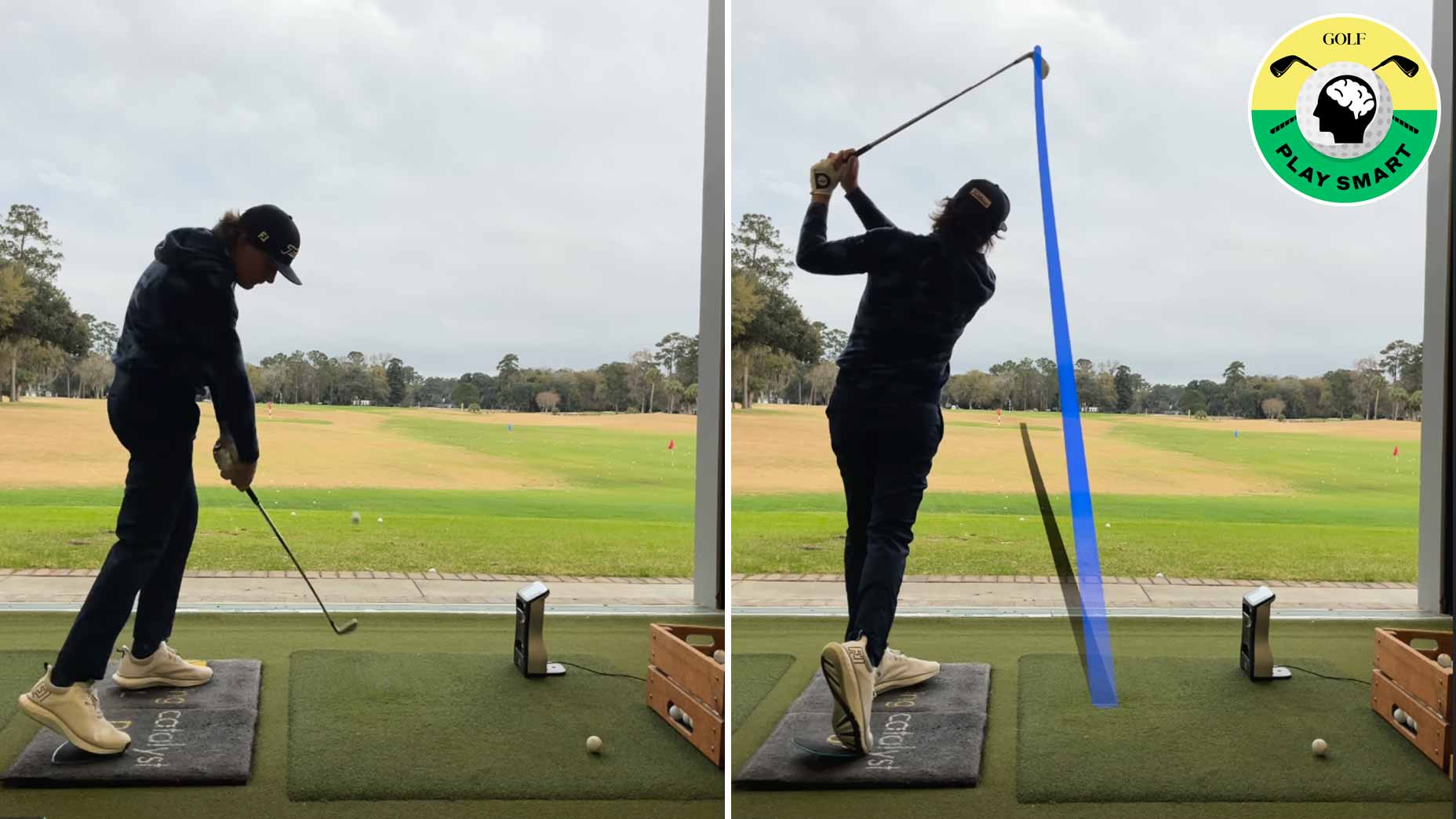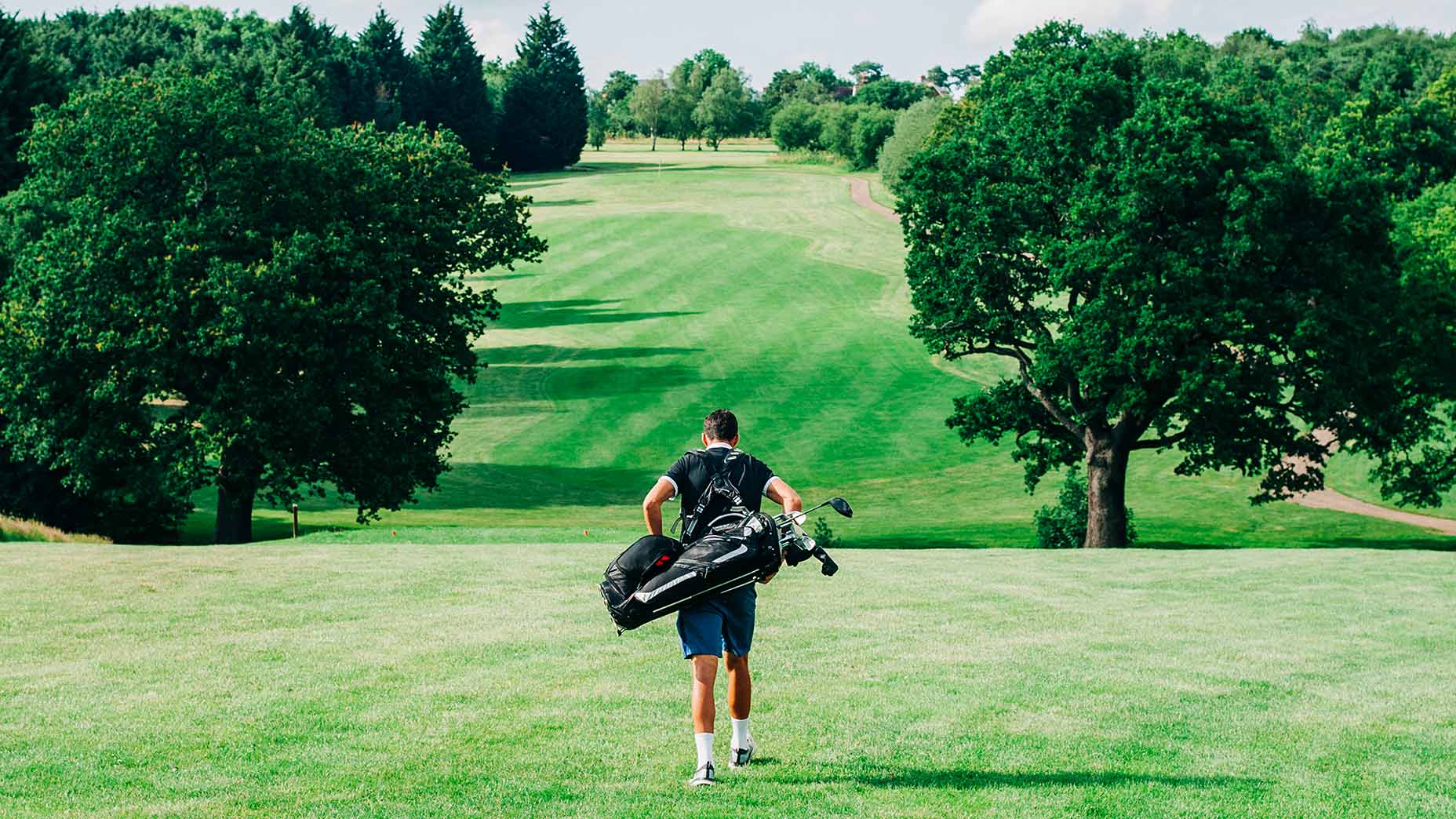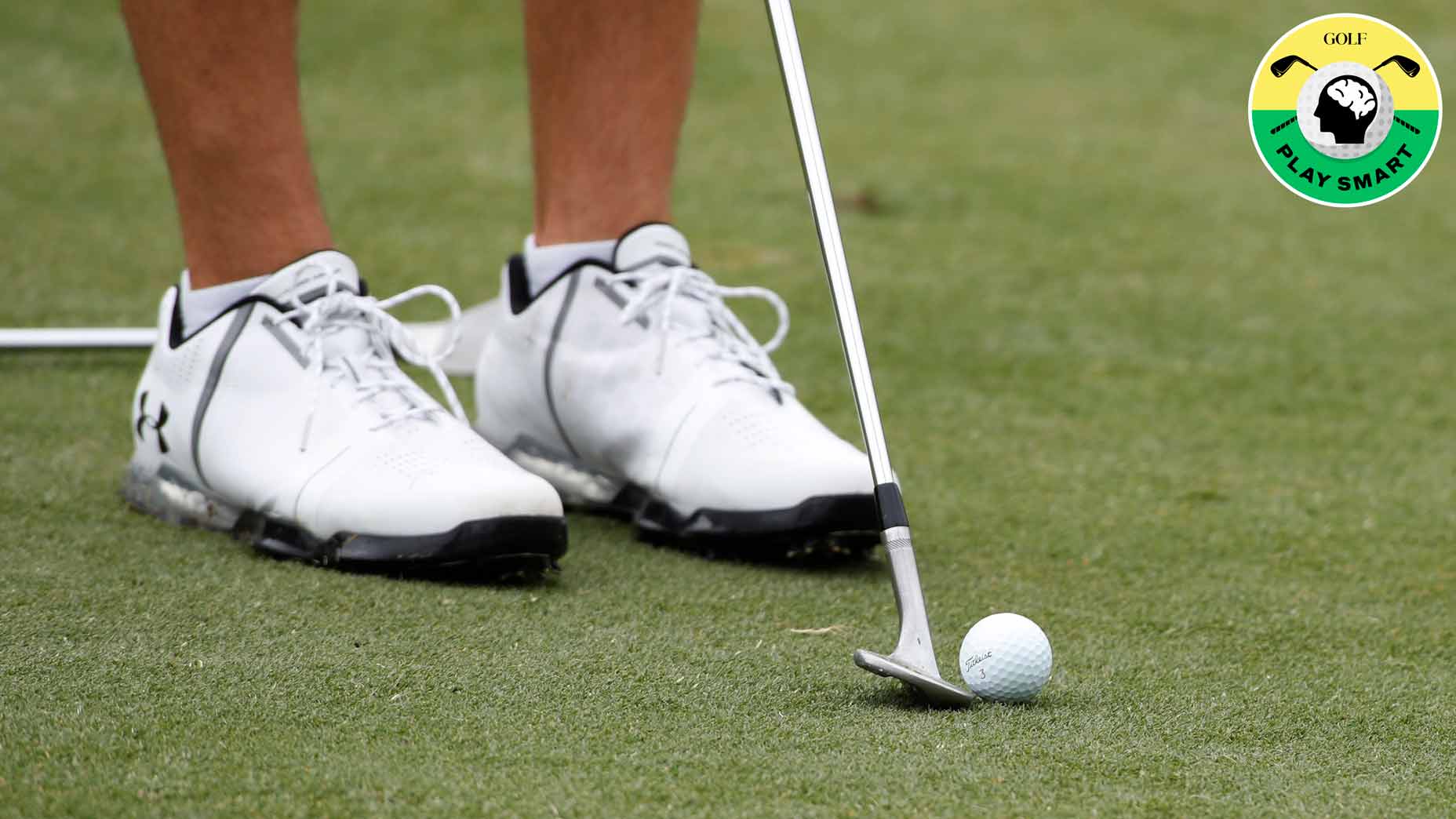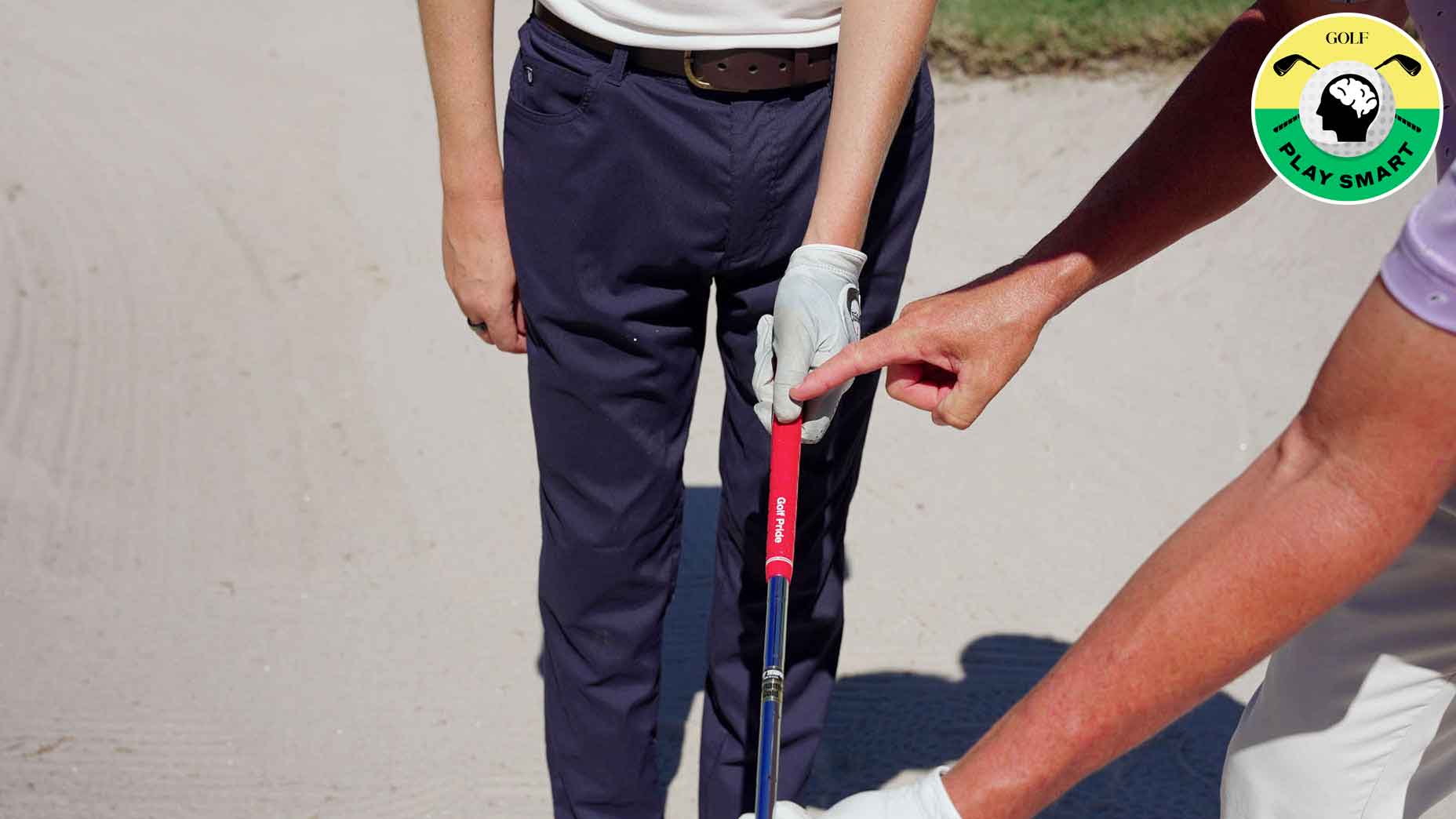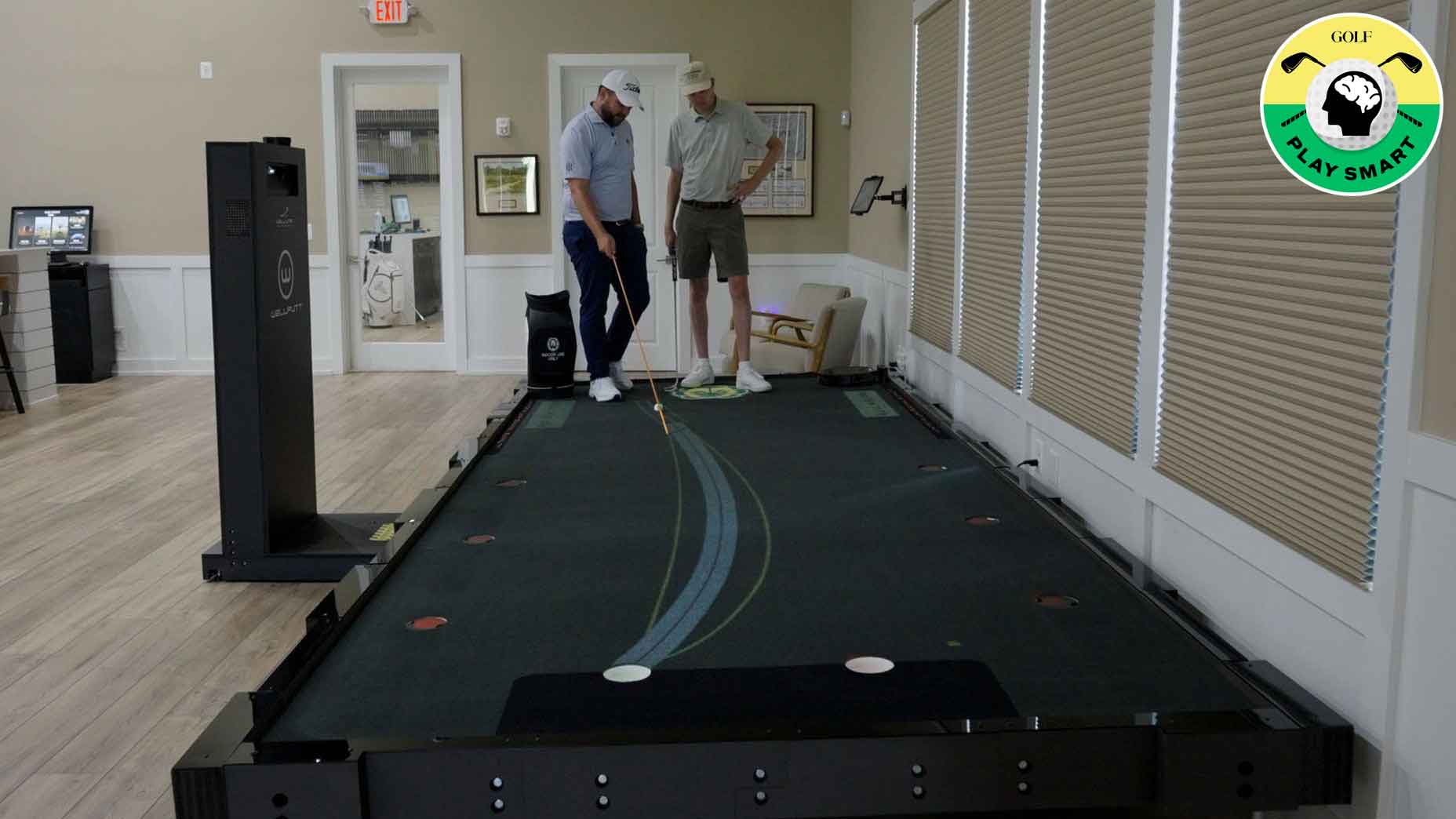Welcome to Play Smart, a game-improvement column that drops every Monday, Wednesday and Friday from Game Improvement Editor Luke Kerr-Dineen (who you can follow on Twitter right here).
Sahith Theegala is one of those PGA Tour rookie who you know is going to stick around.
Just 24 years old, he’s tall, strong, displays an artisanal shotmaker streak and has delivered some big results to back it up.
He’s the prototypical five-tool player, for lack of a better phrase. And he’s also the holder of a very nerdy — but surprisingly important — record at Ping headquarters.
Sahith Theegala has a pretty interesting move through the ball. Absolutely rips power fades. pic.twitter.com/PsvJNjmjYF
— LKD (@LukeKerrDineen) June 25, 2020
Hand path length
As we introduced in our first article earlier this week, Ping’s ENSO system is an advanced computer program that the company uses to track a variety of detailed golf swing data that helps them design golf clubs. One of those data points is “hand path length,” which measures the distance a golfer’s hands travel during their golf swing.
In the more than 75,000 swings recorded in PING’s program, Sahith Theegala in 2020 set the record for the longest hand path ever recorded — and did so by quite a sizable margin.
- Longest hand path length, top of backswing to impact:
- Sahith Theegala: 74.4 inches
- Wilco Nienaber: 70.9 inches
See @SRTheegala's swing under the microscope. 👀 #G425 pic.twitter.com/NclZlrQGdi
— PING GOLF (@PingTour) February 16, 2022
To put those numbers in perspective, the average single-digit handicap has a hand path length of about 50 inches from the top of the backswing to impact.
It’s an important metric because the length your hands travel is one of the easiest and surest ways of measuring how powerful your golf swing is. Quite simply, the longer the hand path, the more potential you have to hit the ball father.
There are a few things that can affect your hand path length, and they each explain why Theegala tops the list.
How golfers can increase their hand path length
First, tall golfers with longer arms will be more likely have a longer hand path. We’ll often refer to this as a player’s “arc,” and it’s partly why tall golfers are capable of such smooth, powerful golf swings. See: Ernie Els and his 6’3″ frame.
“The longer the arc of the swing, the more time you have to apply speed to the golf club,” says Dr. Paul Wood, Ping’s VP of Engineering. “That nice, long travel is a big part of where Sahith gets his speed.”
But your physical make up is only one part of it. More turn in the backswing, with both your hips and upper body, will lend itself to a longer hand path. That’s partly a product of flexibility, but some coaches point to different techniques — like straightening your trail leg, or flaring your trail foot out — to increase your ability to turn.
And there are other techniques that golfers looking to stretch their hand path length can employ, too. Mainly, avoiding your trail arm collapsing (a huge golf swing killer) by stretching your arms out and towards the sky on the backswing.
Theegala has some combination of all of these things, and it’s why he’s built a swing that’s good at the kind of skill the game’s very best players tend to be very good at. It’s also a sign that he could have even more in the tank if he wants it, similar to Tony Finau.
All of it together is a key indicator of the talent within this rising star — and what may be yet to come.


